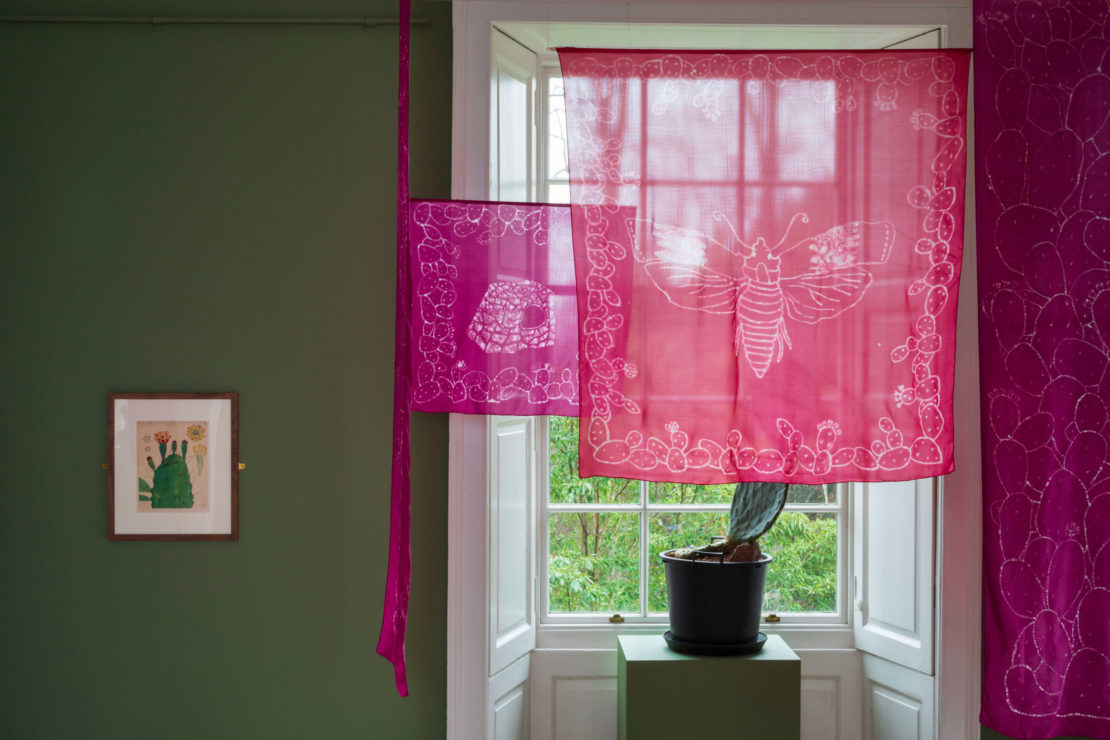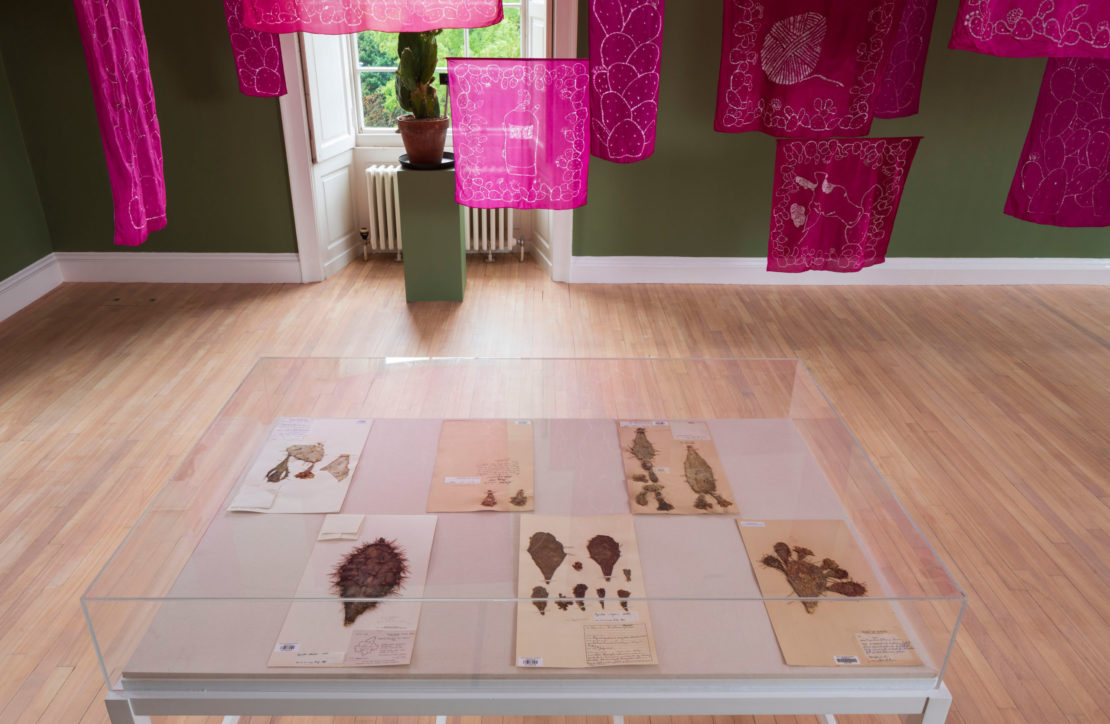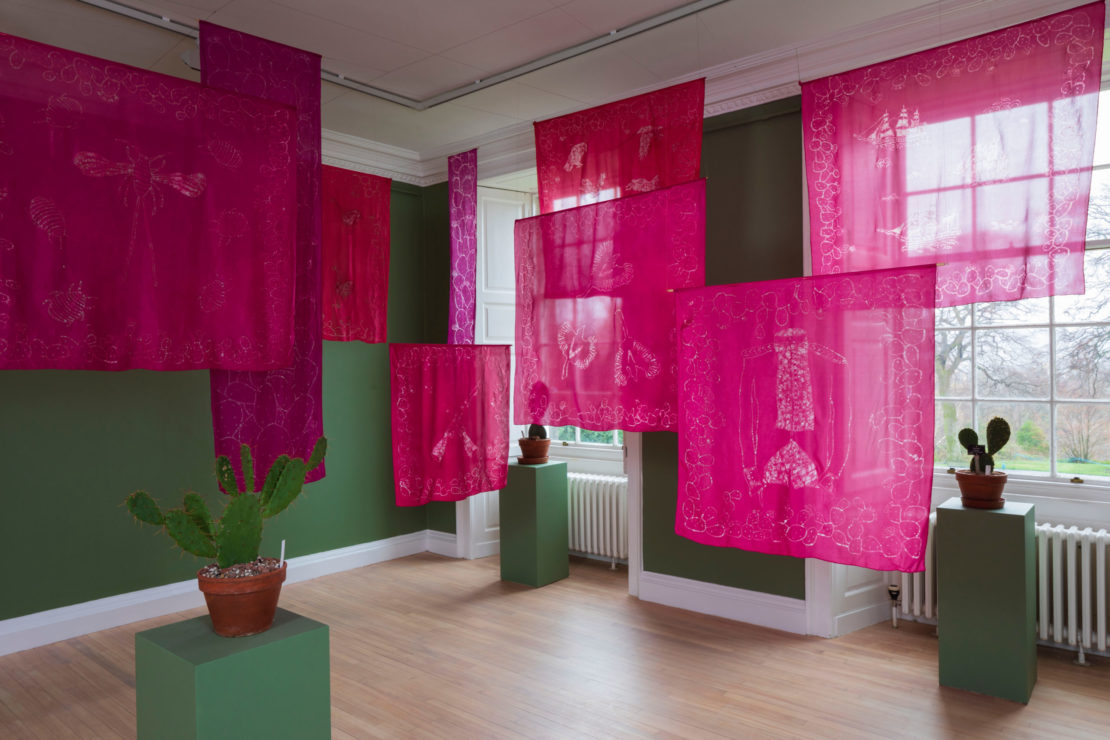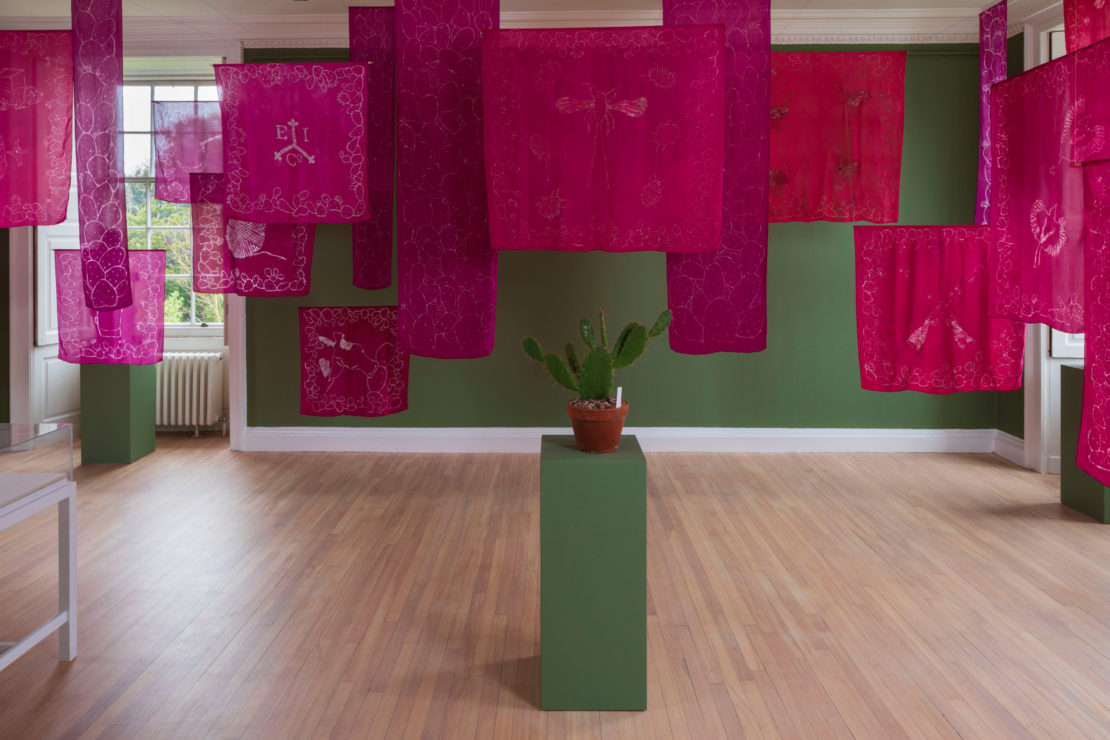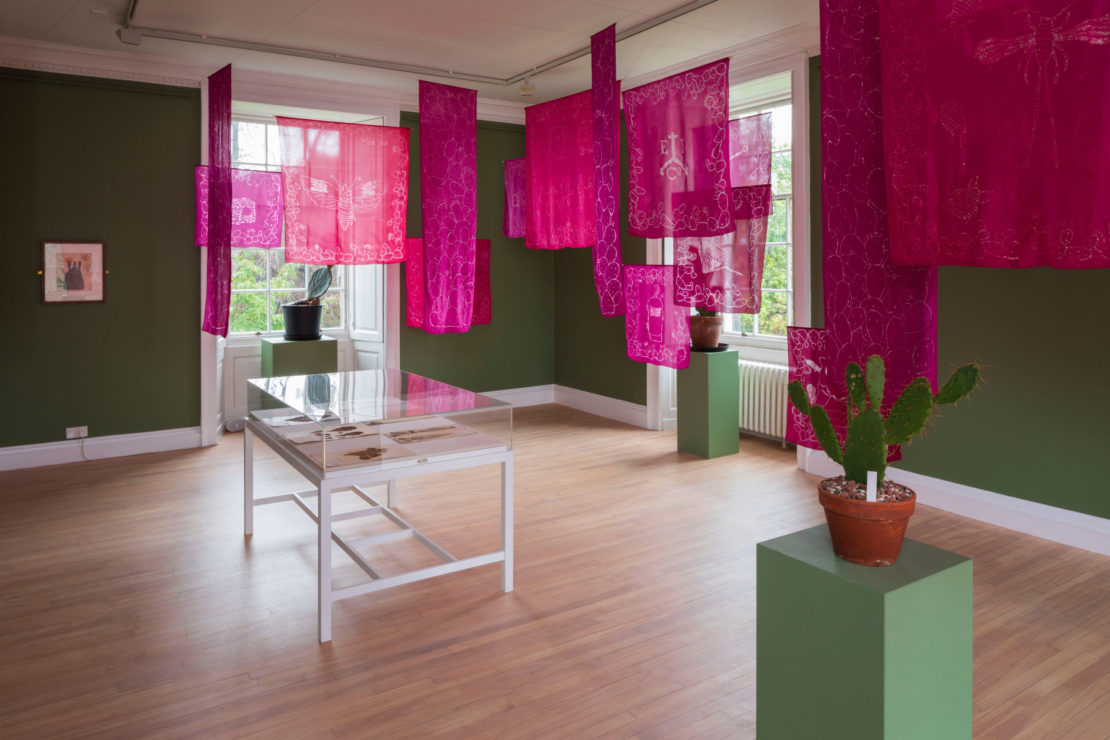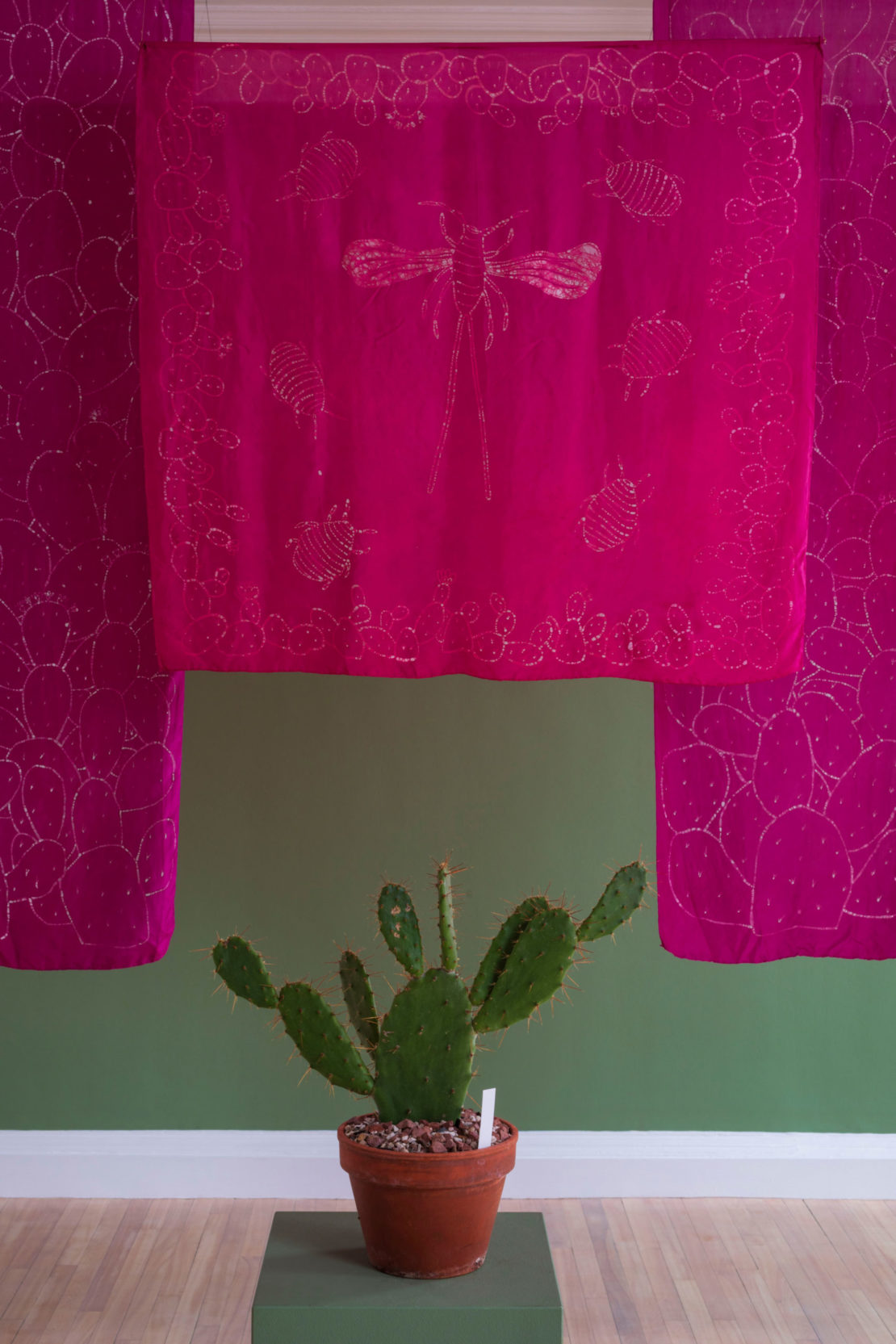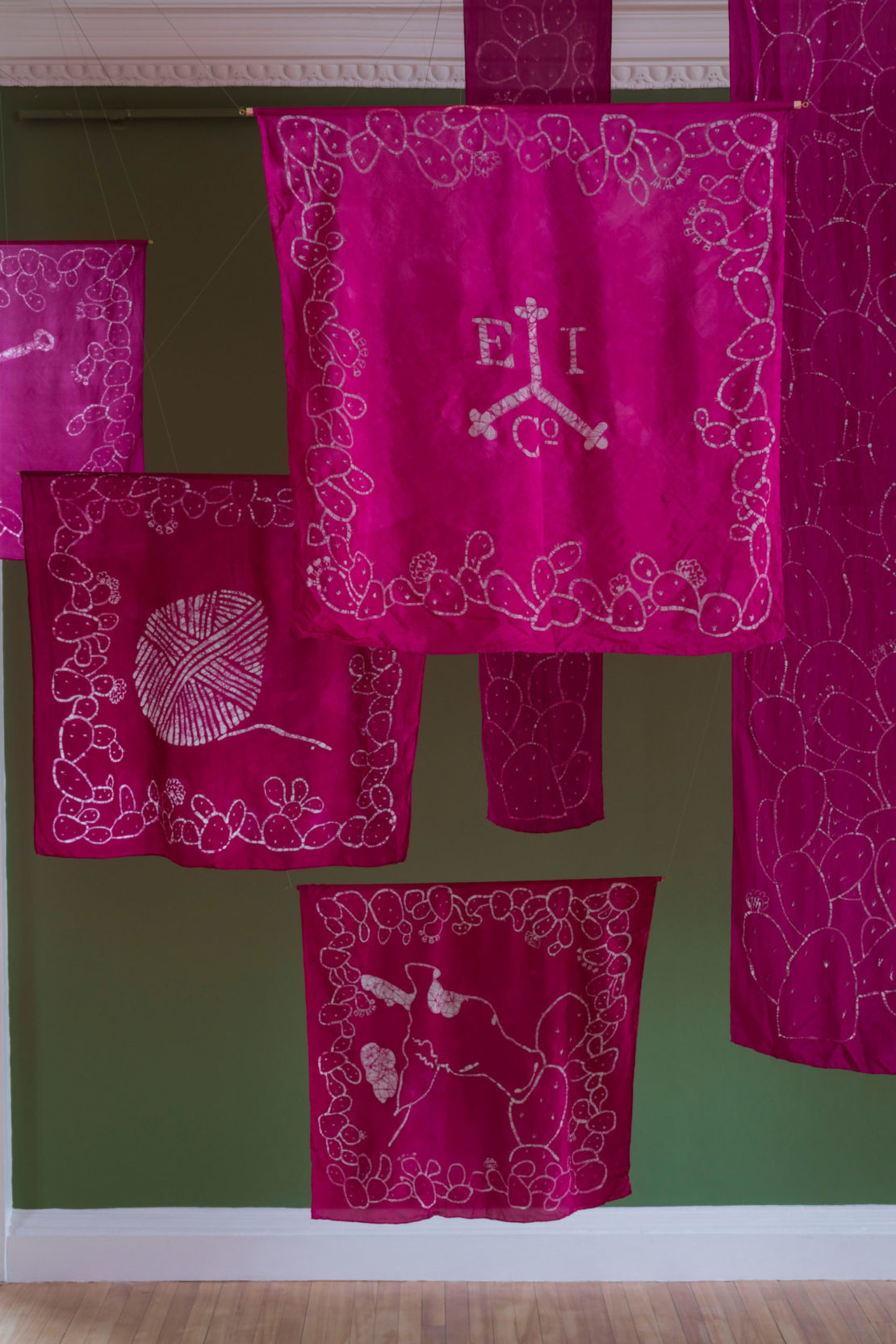Description
Green Hell (2023) was developed as part of a multi-year research project exploring the movement of plants through Empire – culminating in the exhibition: Shipping Roots at Inverleith House, Royal Botanic Garden Edinburgh (March – August 2023)
Batik painting on silk hand-dyed with cochineal, various Opuntia cacti from the Botanics’ living collection, biofeedback audio soundtrack, herbarium specimens, botanical illustrations
Green Hell explores how prickly pear carved out scenes of empire in multifaceted ways and tracks the failures of the British to establish a wealth-building cochineal dye industry in their colonial outposts.
An early coloniser, prickly pear arrived in Australia on the First Fleet; the first boats bringing convicts and colonists from Britain in 1788. It was introduced as a habitat for the cochineal insect and used as an agricultural fence to divide up stolen land. Cochineal insects were ground and used to dye the military redcoats the colour of blood.
Prickly pear thrived in drought-tolerant conditions, overtaking native species, covering an area larger than the size of the UK by the 1920s. Farms were overgrown and abandoned. The infestation was known as a ‘green hell’.
To stop the spread culls of crows, magpies and emus were implemented to prevent them from eating the fruit and spreading the seeds. Hacking, mulching and burning
the plant were tried and even a £10,000 reward was offered but it wasn’t until the Argentinian Cactoblastis cactorum moth, whose larvae eat the plant, was introduced in 1926 that it was contained. The memory of the green hell is still felt today as it is illegal to sell or propagate the plant in many Australian states.
At the same time in India, the East India Company’s cochineal ventures were a different series of missteps and mishaps – from years of failed attempts to get cochineal insects across the seas to the subcontinent to populate their planted nopalries (prickly pear plantations) to eventually introducing the wrong species of the insect that produced a lesser quality dye there was no market for. Their attempts in both locations were a spectacular failure and left lasting impacts on the land and landscape.
Special thanks to Lucas Abela for biofeedback audio, Ivan de Souza for batik teachings and Katherine Hattori for sharing dyeing knowledge.
Photography: Ruth Clark
Shipping Roots is supported by the Outset Transformative Grant; the Australian Government and the British Council as part of the UK/Australia Season; the Australian Government through the Australia Council, its arts funding and advisory body; the NSW Government through Create NSW; and a City of Parramatta Council Community Grant.

